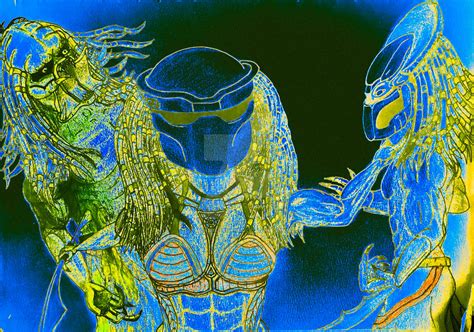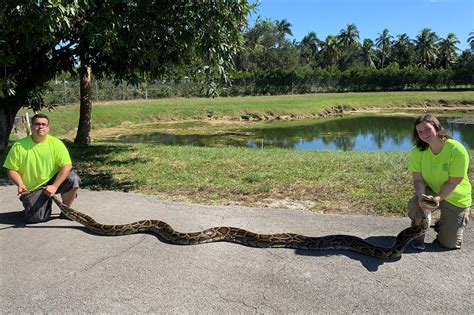
Ancient DNA from Maya people who lived more than 1,000 years ago is providing unprecedented insights into the civilization’s history, social structure, and resilience, challenging long-held assumptions about its decline. A comprehensive study published in Nature Communications reveals that the Maya civilization was more genetically diverse than previously thought, exhibiting distinct regional populations with complex relationships and resistance to widespread collapse. The research underscores the importance of considering regional variations and long-term resilience when studying past civilizations.
The groundbreaking study, led by an international team of researchers, analyzed the genomes of individuals buried at various sites across present-day Belize, Guatemala, and Mexico, spanning the Preclassic (300 BCE–250 CE), Classic (250–800 CE), and Postclassic (800–1500 CE) periods. By examining the genetic data of individuals across different time periods and locations, scientists were able to trace population movements, family lineages, and genetic adaptations within the Maya civilization.
“We were able to generate, for the first time, a good amount of data to address some of these long-standing questions of Maya prehistory,” said co-author Dr. Rodrigo Barquera, a geneticist at the Max Planck Institute for Evolutionary Anthropology. The study’s findings offer a nuanced perspective on the Maya civilization, moving beyond simplified narratives of collapse and revealing a more complex story of adaptation and resilience.
One of the most significant findings of the study is the identification of distinct genetic differences between Maya populations from different regions. The research team identified a major genetic division between people living in the western and eastern Maya regions, which likely began thousands of years ago. “There’s quite deep divergence between the western and eastern Maya groups. It seems that the split emerged probably 8,000 years ago, or even earlier,” said Dr. Barquera. This genetic diversity highlights the importance of studying regional variations when seeking to understand the overall dynamics of the Maya civilization.
Furthermore, the study found evidence of genetic continuity within certain Maya lineages over long periods, suggesting that some families maintained their social status and power for generations. Analysis of the skeletal remains from the Uxbenká site in southern Belize revealed that individuals buried in an elite tomb were closely related to each other, indicating that privileged positions were inherited within families. “We confirmed that the individuals from the elite tomb are highly related,” noted Dr. Barquera. This finding provides valuable insights into the social structure of Maya society and the mechanisms by which power was maintained.
The ancient DNA also offered insight into the Maya collapse, a period of significant social and political upheaval that occurred between the 8th and 10th centuries CE. The study found evidence of population movements and shifts in genetic diversity during this period, suggesting that the collapse was not a uniform event across the Maya region. “Our study indicates that while some regions experienced decline and abandonment, others persisted and even thrived,” explained Dr. Kendra Sirak, a co-author of the study. The genetic data suggests that some Maya populations were able to adapt to the changing conditions and maintain their cultural identity.
Moreover, the research team explored the genetic relationships between ancient and modern Maya populations. They found that modern Maya people are direct descendants of the ancient Maya, carrying significant portions of their ancestors’ DNA. “Modern Maya people do descend from the ancient Maya people. They share ancestry,” affirmed Dr. Barquera. This finding refutes previous theories that suggested a complete replacement of the ancient Maya population and underscores the enduring legacy of the Maya civilization. The study contributes to a growing body of research that utilizes ancient DNA to reconstruct the history of human populations and shed light on the complex processes of cultural change and adaptation.
Another key aspect of the study was the analysis of pathogen DNA found within the ancient Maya remains. The researchers were able to identify traces of various infectious diseases, providing insights into the health challenges faced by the Maya people. “We were surprised to find evidence of pathogens within the ancient DNA samples,” said Dr. Johannes Krause, a senior author of the study. The identification of specific pathogens can help scientists understand how diseases may have contributed to population declines and social changes in the Maya region.
The research encountered several challenges, including the degradation of DNA in the tropical climate and the need to carefully authenticate the ancient DNA samples. The researchers used stringent methods to ensure that the DNA was truly ancient and not the result of contamination. “Working with ancient DNA in tropical regions is particularly challenging due to the rapid degradation of genetic material,” explained Dr. Sirak. “We had to implement rigorous quality control measures to ensure the accuracy of our results.”
The findings of this study have significant implications for our understanding of the Maya civilization. By combining genetic data with archaeological evidence, researchers can create a more complete picture of Maya history, social structure, and resilience. The study also highlights the importance of interdisciplinary collaboration in archaeological research, bringing together experts in genetics, archaeology, and anthropology to tackle complex questions.
“This research represents a major step forward in our understanding of the Maya civilization,” said Dr. David Stuart, a Maya epigrapher and archaeologist at the University of Texas at Austin, who was not involved in the study. “By using ancient DNA, we can gain insights into aspects of Maya society that are not accessible through traditional archaeological methods.”
The study’s conclusion states, “Our results underscore the importance of incorporating genetic data into archaeological research to gain a more comprehensive understanding of past civilizations and the processes of cultural change.”
The research emphasizes that the Maya civilization should not be viewed as a monolithic entity but rather as a diverse collection of regional populations, each with its unique history and trajectory. It also highlights the importance of long-term perspectives when studying ancient societies, recognizing that civilizations can undergo periods of both growth and decline. The study suggests that the Maya civilization’s resilience was due in part to its ability to adapt to changing environmental and social conditions.
This research opens new avenues for investigation into the Maya civilization, including further analysis of ancient DNA to explore questions about diet, disease, and social interactions. It also underscores the importance of preserving archaeological sites and protecting the cultural heritage of the Maya people.
In conclusion, the ancient Maya DNA unlocks secrets of civilization’s fall by revealing a complex story of adaptation, resilience, and regional diversity. The study challenges simplistic narratives of collapse and underscores the importance of incorporating genetic data into archaeological research to gain a more comprehensive understanding of past civilizations.
Frequently Asked Questions (FAQ)
Q1: What is the main finding of the ancient Maya DNA study?
A: The main finding is that the Maya civilization was more genetically diverse than previously thought, with distinct regional populations exhibiting complex relationships and remarkable resilience. The study challenges long-held assumptions about the civilization’s decline, suggesting a more nuanced picture of adaptation and continuity rather than a uniform collapse. The research provides evidence that modern Maya people are direct descendants of the ancient Maya, carrying significant portions of their ancestors’ DNA.
Q2: Where did the researchers obtain the ancient DNA samples for this study?
A: The researchers analyzed the genomes of individuals buried at various sites across present-day Belize, Guatemala, and Mexico. These sites span the Preclassic (300 BCE–250 CE), Classic (250–800 CE), and Postclassic (800–1500 CE) periods, providing a comprehensive temporal and geographic range for the study. Skeletal remains were carefully excavated, and DNA was extracted and analyzed using advanced genomic techniques. The Uxbenká site in southern Belize, in particular, provided valuable DNA samples from an elite tomb.
Q3: How does this study challenge previous understandings of the Maya collapse?
A: The study challenges the idea of a uniform, civilization-wide collapse of the Maya. The genetic data reveals that while some regions experienced decline and abandonment, others persisted and even thrived. Population movements and shifts in genetic diversity during the period of the “collapse” suggest that the Maya adapted to changing conditions in different ways, demonstrating resilience and regional variations. The study provides evidence that some Maya populations maintained their cultural identity and continuity despite the social and political upheavals.
Q4: What role did genetic diversity play in the resilience of the Maya civilization?
A: Genetic diversity played a crucial role in the resilience of the Maya civilization. The study identified distinct genetic differences between Maya populations from different regions, indicating that the civilization was not a monolithic entity. This diversity likely allowed different Maya groups to adapt to varying environmental and social challenges. The genetic evidence suggests that some Maya populations were better equipped to withstand the period of collapse due to their unique genetic adaptations and resilience strategies. This regional differentiation contributed to the overall survival and continuity of the Maya people.
Q5: How does this research benefit modern Maya populations?
A: This research benefits modern Maya populations by confirming their direct ancestral connection to the ancient Maya. The study refutes previous theories that suggested a complete replacement of the ancient Maya population, affirming the enduring legacy of the Maya civilization within contemporary Maya communities. By providing a deeper understanding of their history and genetic heritage, the research can contribute to cultural revitalization efforts and strengthen the sense of identity and pride among modern Maya people. Additionally, the findings can inform efforts to preserve archaeological sites and protect the cultural heritage of the Maya civilization.
Expanded Article with Additional Details and Context
The collapse of the Maya civilization, a period of dramatic social and political upheaval between the 8th and 10th centuries CE, has long been a subject of intense scholarly debate. Theories abound, ranging from environmental degradation and climate change to warfare and internal strife. However, a new study leveraging ancient DNA is adding a crucial layer of understanding to this complex historical puzzle, suggesting that the reality was far more nuanced and regionally specific than previously imagined.
The study, published in Nature Communications, analyzed the genomes of individuals buried at various sites across what is now Belize, Guatemala, and Mexico, spanning the Preclassic, Classic, and Postclassic periods. This extensive dataset allowed the researchers to trace population movements, family lineages, and genetic adaptations over centuries, providing a unique window into the dynamics of Maya society.
“This is a landmark study in Maya archaeology,” commented Dr. Lisa Lucero, an expert in Maya civilization at the University of Illinois, who was not involved in the research. “The use of ancient DNA is revolutionizing our understanding of the past, and this study provides invaluable insights into the history and resilience of the Maya people.”
One of the most significant findings of the study is the identification of distinct genetic differences between Maya populations from different regions. The researchers discovered a major genetic division between people living in the western and eastern Maya regions, a split that likely originated thousands of years ago. This suggests that the Maya civilization was not a unified entity but rather a collection of distinct regional populations, each with its own unique history and trajectory.
“We see deep divergence between the western and eastern Maya groups,” explained Dr. Barquera. “It seems that the split emerged probably 8,000 years ago, or even earlier. This highlights the importance of studying regional variations when seeking to understand the overall dynamics of the Maya civilization.”
This regional diversity may have played a crucial role in the civilization’s resilience. While some regions experienced decline and abandonment during the collapse period, others persisted and even thrived. The genetic data suggests that these different regions had different strategies for coping with the challenges of the time, and that some were better equipped to adapt to changing environmental and social conditions.
The study also sheds light on the social structure of Maya society. Analysis of skeletal remains from the Uxbenká site in southern Belize revealed that individuals buried in an elite tomb were closely related to each other, suggesting that privileged positions were inherited within families. This finding provides valuable insights into the mechanisms by which power was maintained in Maya society.
“We confirmed that the individuals from the elite tomb are highly related,” noted Dr. Barquera. “This suggests that social status and power were passed down through generations, reinforcing the hierarchical structure of Maya society.”
The ancient DNA also offered insights into the health challenges faced by the Maya people. The researchers were able to identify traces of various infectious diseases, providing clues about the factors that may have contributed to population declines and social changes.
“We were surprised to find evidence of pathogens within the ancient DNA samples,” said Dr. Krause. “This opens up new avenues for investigating the role of disease in the history of the Maya civilization.”
The study also addressed the question of the relationship between ancient and modern Maya populations. The researchers found that modern Maya people are direct descendants of the ancient Maya, carrying significant portions of their ancestors’ DNA. This finding refutes previous theories that suggested a complete replacement of the ancient Maya population and underscores the enduring legacy of the Maya civilization.
“Modern Maya people do descend from the ancient Maya people. They share ancestry,” affirmed Dr. Barquera. “This is a powerful affirmation of the cultural and historical continuity of the Maya people.”
The research encountered several challenges, including the degradation of DNA in the tropical climate and the need to carefully authenticate the ancient DNA samples. The researchers used stringent methods to ensure that the DNA was truly ancient and not the result of contamination.
“Working with ancient DNA in tropical regions is particularly challenging due to the rapid degradation of genetic material,” explained Dr. Sirak. “We had to implement rigorous quality control measures to ensure the accuracy of our results.”
Despite these challenges, the researchers were able to generate a wealth of valuable data that is transforming our understanding of the Maya civilization. The study highlights the importance of interdisciplinary collaboration in archaeological research, bringing together experts in genetics, archaeology, and anthropology to tackle complex questions.
“This research represents a major step forward in our understanding of the Maya civilization,” said Dr. Stuart. “By using ancient DNA, we can gain insights into aspects of Maya society that are not accessible through traditional archaeological methods.”
The findings of this study have significant implications for our understanding of the Maya civilization. By combining genetic data with archaeological evidence, researchers can create a more complete picture of Maya history, social structure, and resilience. The study also highlights the importance of long-term perspectives when studying ancient societies, recognizing that civilizations can undergo periods of both growth and decline.
The Maya civilization’s resilience was likely due in part to its ability to adapt to changing environmental and social conditions. The genetic data suggests that different Maya populations developed different strategies for coping with these challenges, and that some were more successful than others. This regional diversity may have been a key factor in the civilization’s overall survival.
The study opens new avenues for investigation into the Maya civilization, including further analysis of ancient DNA to explore questions about diet, disease, and social interactions. It also underscores the importance of preserving archaeological sites and protecting the cultural heritage of the Maya people.
In addition to the regional diversity and social structure, the study also provided evidence related to the cultural practices of the ancient Maya. For instance, the analysis of dental modification practices, like filing and inlaying teeth with jade, showed that these practices were common among individuals of higher social status. This finding corroborated previous archaeological evidence and provided further support for the association between dental modifications and social hierarchy in Maya society.
Furthermore, the researchers were able to analyze the diets of the ancient Maya based on the isotopic composition of their bones and teeth. The results indicated that maize was a staple food in the Maya diet, but that there were regional variations in the consumption of other resources, such as meat and beans. This information provides insights into the agricultural practices and foodways of the ancient Maya.
The study also investigated the genetic relationships between different Maya sites. By comparing the genomes of individuals from different locations, the researchers were able to identify patterns of migration and gene flow across the Maya region. This analysis revealed that there was significant interaction between different Maya communities, but that there were also barriers to gene flow in certain areas.
Moreover, the research team explored the genetic basis of certain physical traits in the ancient Maya. For example, they found evidence that some individuals had genetic variants associated with resistance to certain diseases, such as malaria. This suggests that the Maya people may have adapted to the challenges of their environment through natural selection.
The study also raised new questions about the origins of the Maya civilization. The genetic data suggested that the Maya people may have migrated to the region from elsewhere in Mesoamerica, and that they may have intermarried with other indigenous groups. This highlights the complex and dynamic nature of the pre-Columbian history of the Americas.
The findings of this study have been widely praised by experts in the field of Maya archaeology. Many have hailed it as a groundbreaking achievement that is transforming our understanding of the ancient Maya.
“This study is a game-changer,” said Dr. Jane Buikstra, a bioarchaeologist at Arizona State University. “It provides us with a level of detail about the Maya that we have never had before. It is truly remarkable.”
The research team is now planning to conduct further studies using ancient DNA to explore other aspects of the Maya civilization. They hope to investigate questions about the causes of the Maya collapse, the role of warfare in Maya society, and the religious beliefs of the ancient Maya.
In conclusion, the ancient Maya DNA study is a major step forward in our understanding of one of the world’s most fascinating civilizations. By combining genetic data with archaeological evidence, the researchers have created a more complete and nuanced picture of Maya history, social structure, and resilience. The study also highlights the importance of interdisciplinary collaboration in archaeological research, and the potential of ancient DNA to unlock secrets of the past.
The study also has significant implications for modern Maya communities. By confirming their direct ancestral connection to the ancient Maya, the research can help to strengthen their cultural identity and promote their rights. The study also provides valuable information about the health and well-being of the ancient Maya, which could be used to inform modern healthcare practices in Maya communities.
The researchers are committed to working with Maya communities to ensure that the findings of their research are used in a responsible and ethical manner. They believe that it is important to share the knowledge gained from this study with the people who have the most at stake in its outcome.
The findings of the study were carefully reviewed by a panel of experts in Maya history and culture before they were published. This ensured that the study was accurate, objective, and respectful of Maya traditions. The researchers also consulted with Maya community leaders throughout the project to ensure that their concerns were addressed.
This meticulous approach to research underscores the importance of ethical considerations when studying ancient populations. The study serves as a model for future research in this field, demonstrating how ancient DNA can be used to unlock secrets of the past while respecting the rights and traditions of modern communities.
The impact of this study will be felt for years to come. It is sure to inspire new research and debate about the Maya civilization, and to help to shape our understanding of this fascinating and complex culture.









